![[Laboratory XII - Walk on the Wild Side: The U.C. Botanical Garden]](BGD/BGfont.jpeg)
![[Laboratory XII - Walk on the Wild Side: The U.C. Botanical Garden]](BGD/BGfont.jpeg)
Nothofagus, the southern beech, is a classic example of plant biogeography. The distribution of this plant continues to puzzle botanists, paleobotanists, pyhlogeneticists, molecular systematists, and geologists alike. Nothofagus is the only southern genus in the family Fagaceae, whose northern genera include Fagus (beech), and Quercus (oak).
Nothofagus is also a classic example of a plant genus with a disjunct (discontinuous) distribution. This is very nicely illustrated here in the garden, where you can stand on the path separating the South American and Australian sections and find yourself between Nothofagus dombeyi from Chile and Nothofagus menziesii from New Zealand.
Remember that a disjunct distribution may be the result of dispersal or of a vicariance event. In considering the distribution of Nothofagus, remember that its seeds are intolerant of sea water. With that information in hand, use the distributions of Nothofagus and Fagus (Figure 12.1) and continental movement (Figure 12.2) to devise a plausible hypothesis that explains the present distribution of Nothofagus.
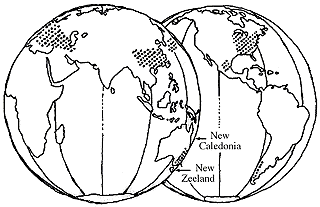
|
| Figure 12.1: Present distribution of Fagus (northern hemisphere) and Nothofagus (southern hemisphere). |

150 mya |
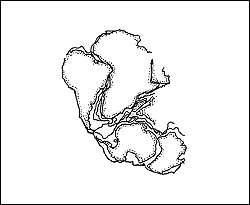
115 mya |
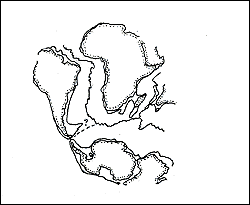
65 mya |
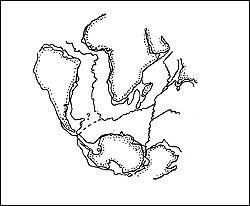
53 mya |
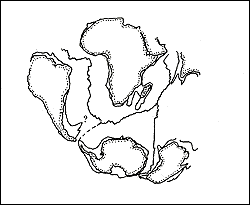
39 mya |
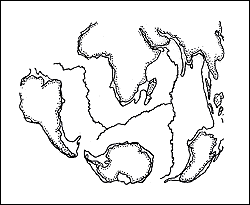
Present |
| Figure 12.2: Continental positions through time. Note the oldest reconstructions at top left, and present day at bottom. | |
![[Previous Page]](../VPLimg/Back.jpeg) |
![[Title Page]](BGD/BGbutt.jpeg) |
![[Glossary]](../VPLimg/Glossbutt.jpeg) |
![[Geologic Time Scale]](../VPLimg/timesbutt.jpeg) |
![[Next Page]](../VPLimg/Forward.jpeg) |

